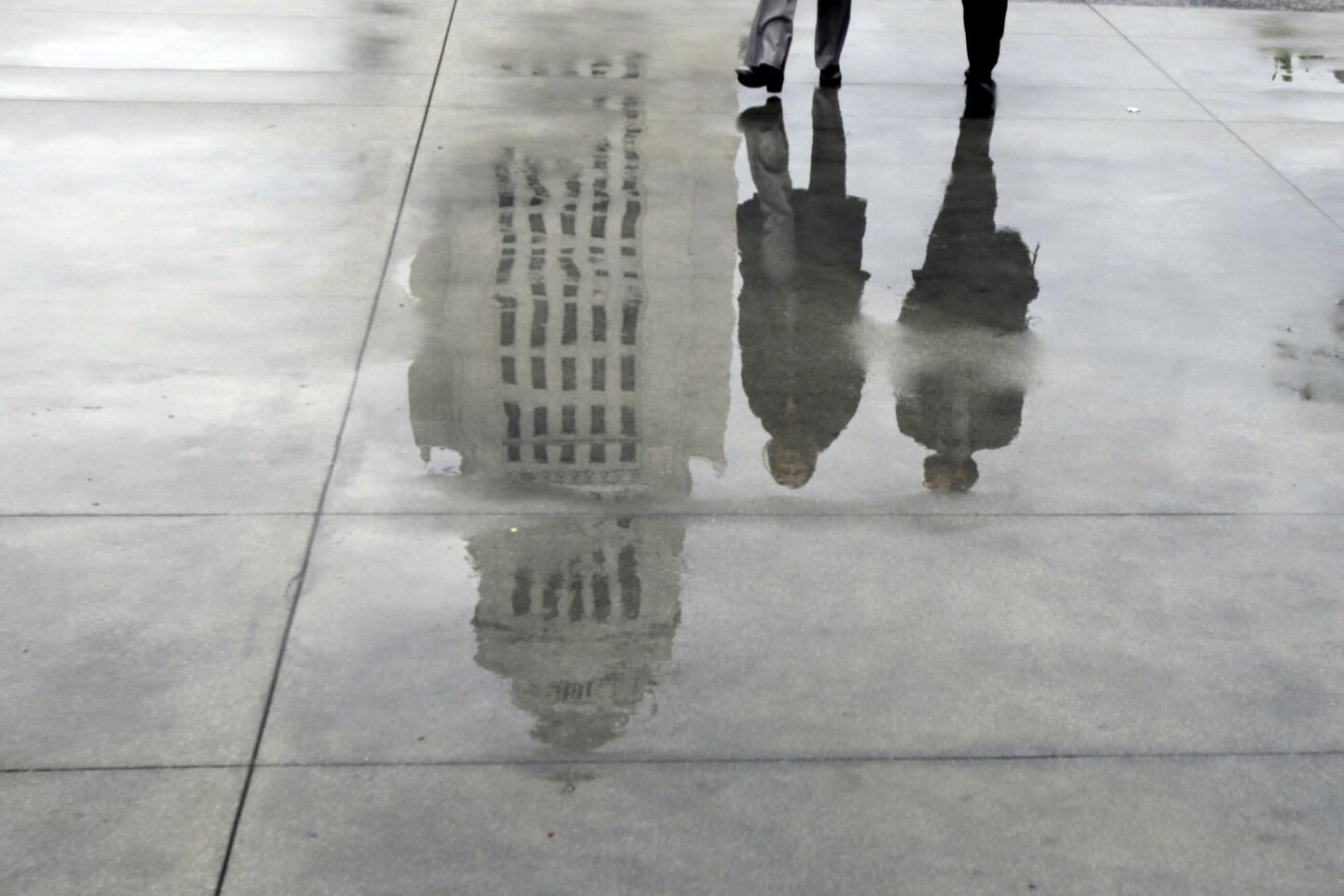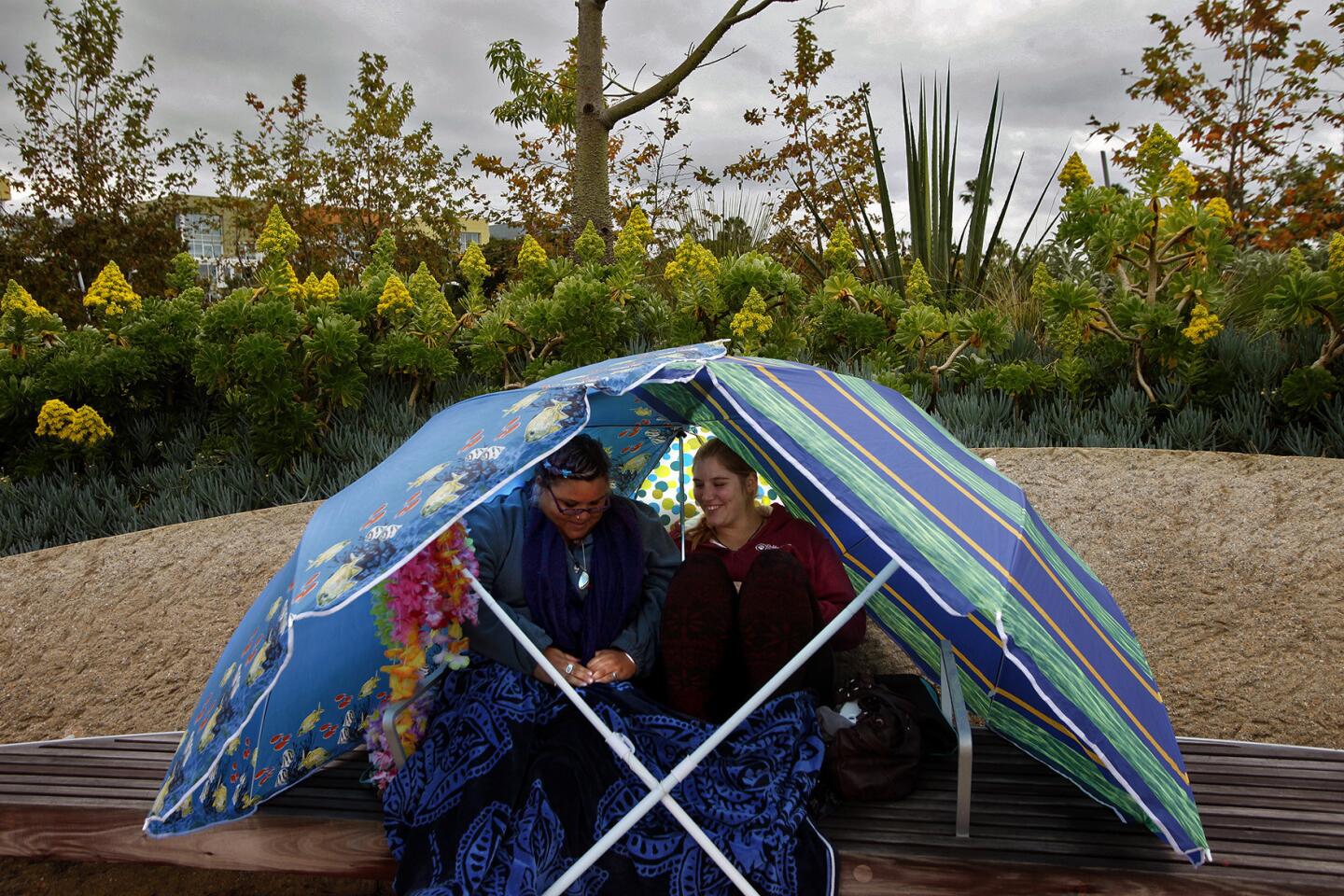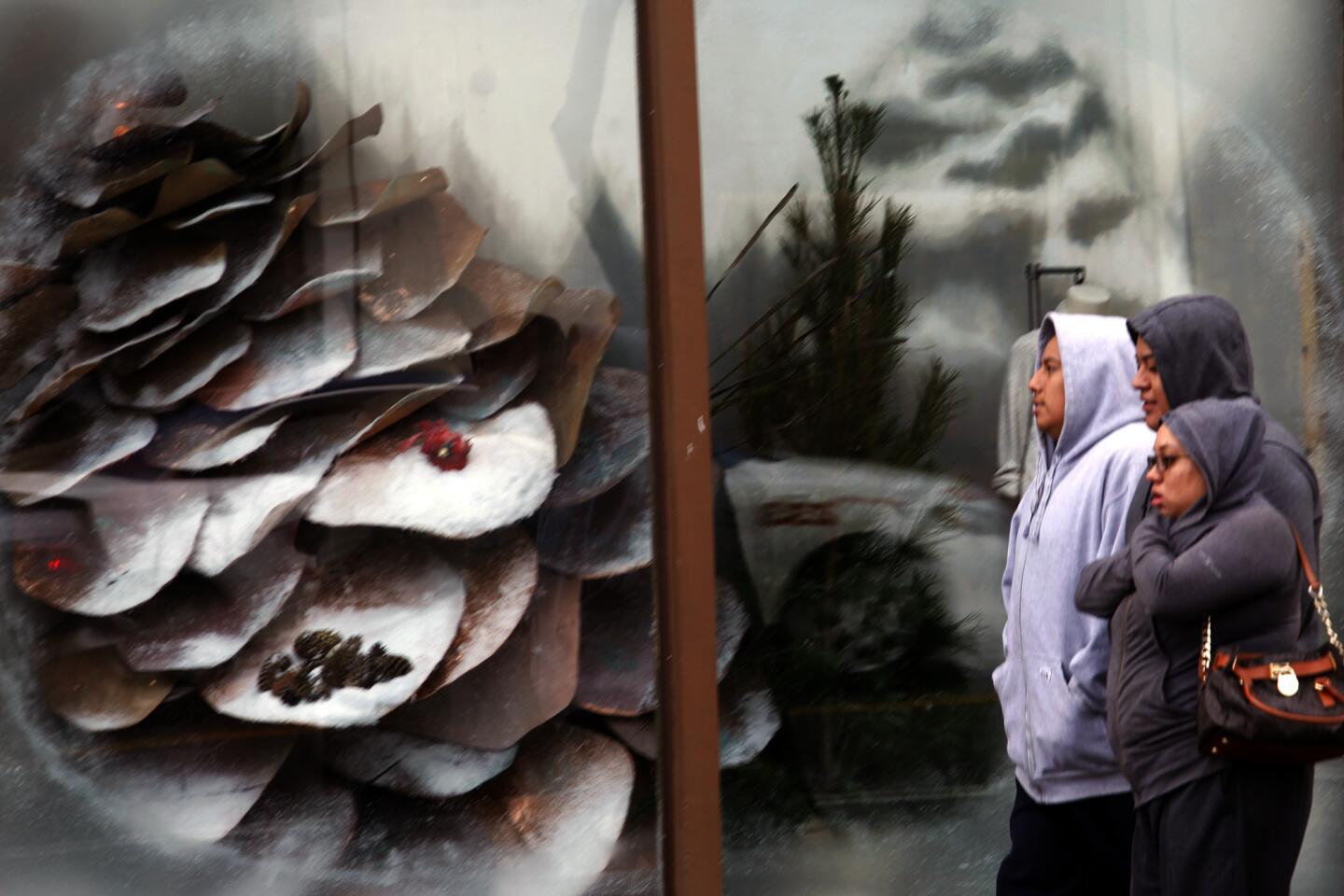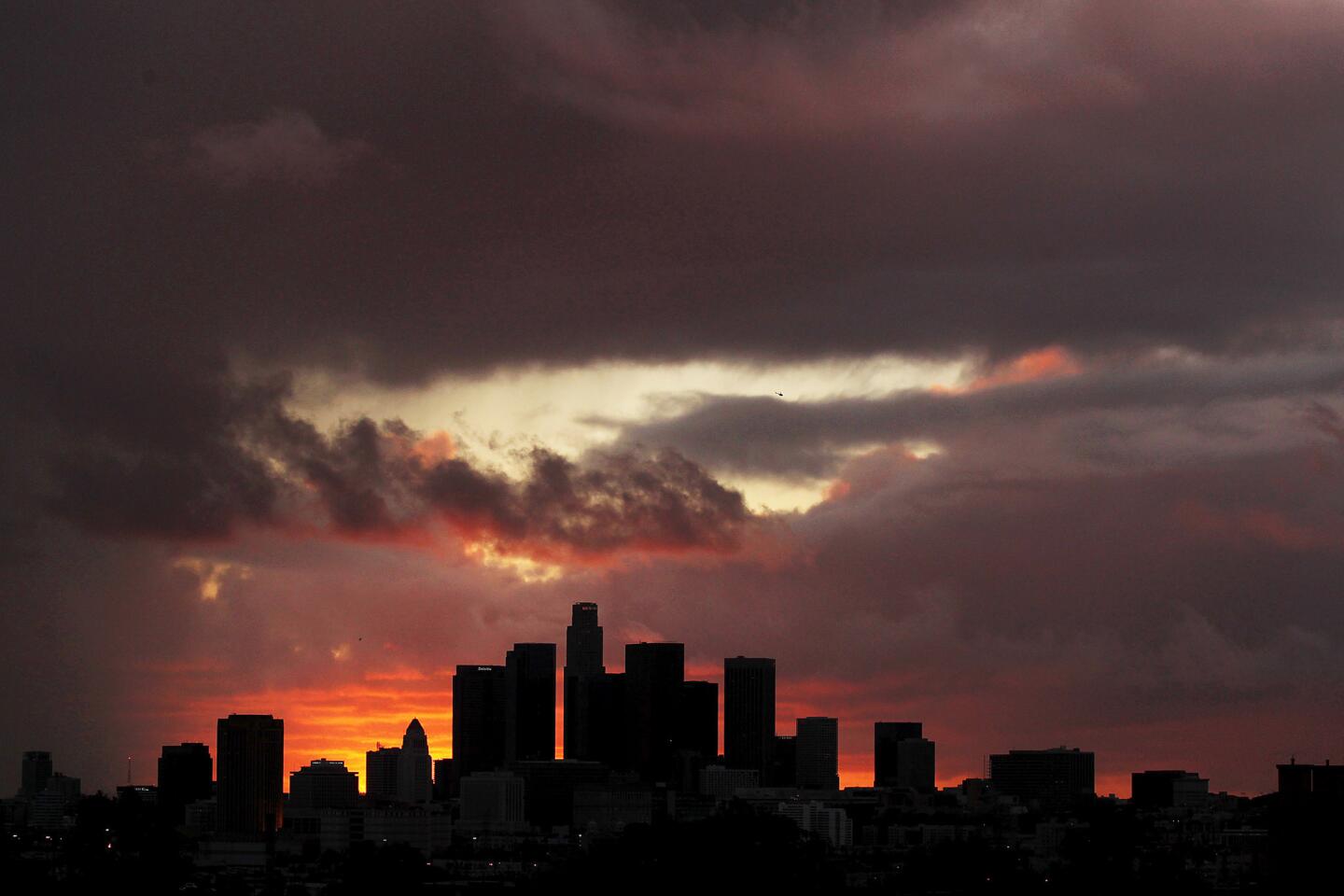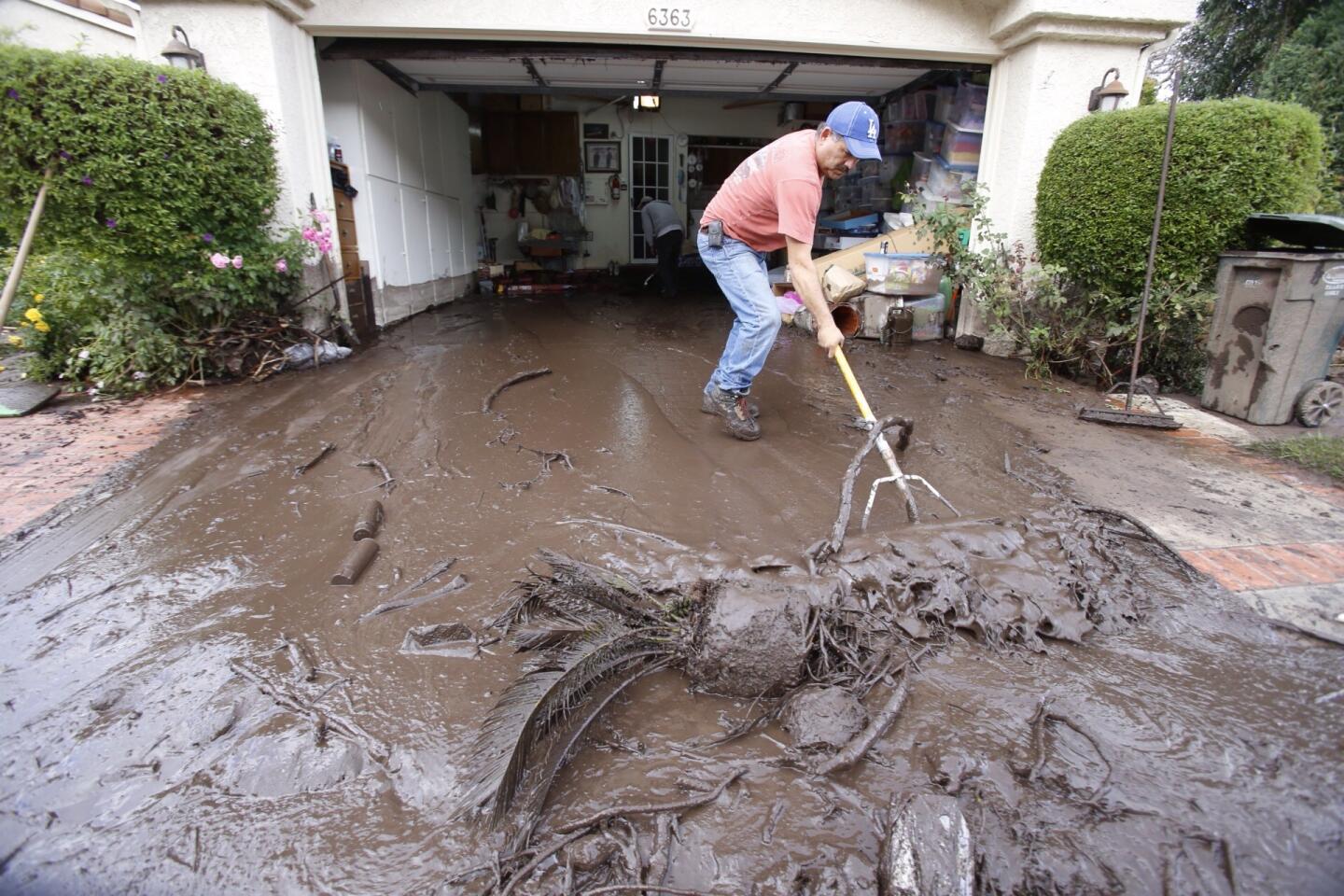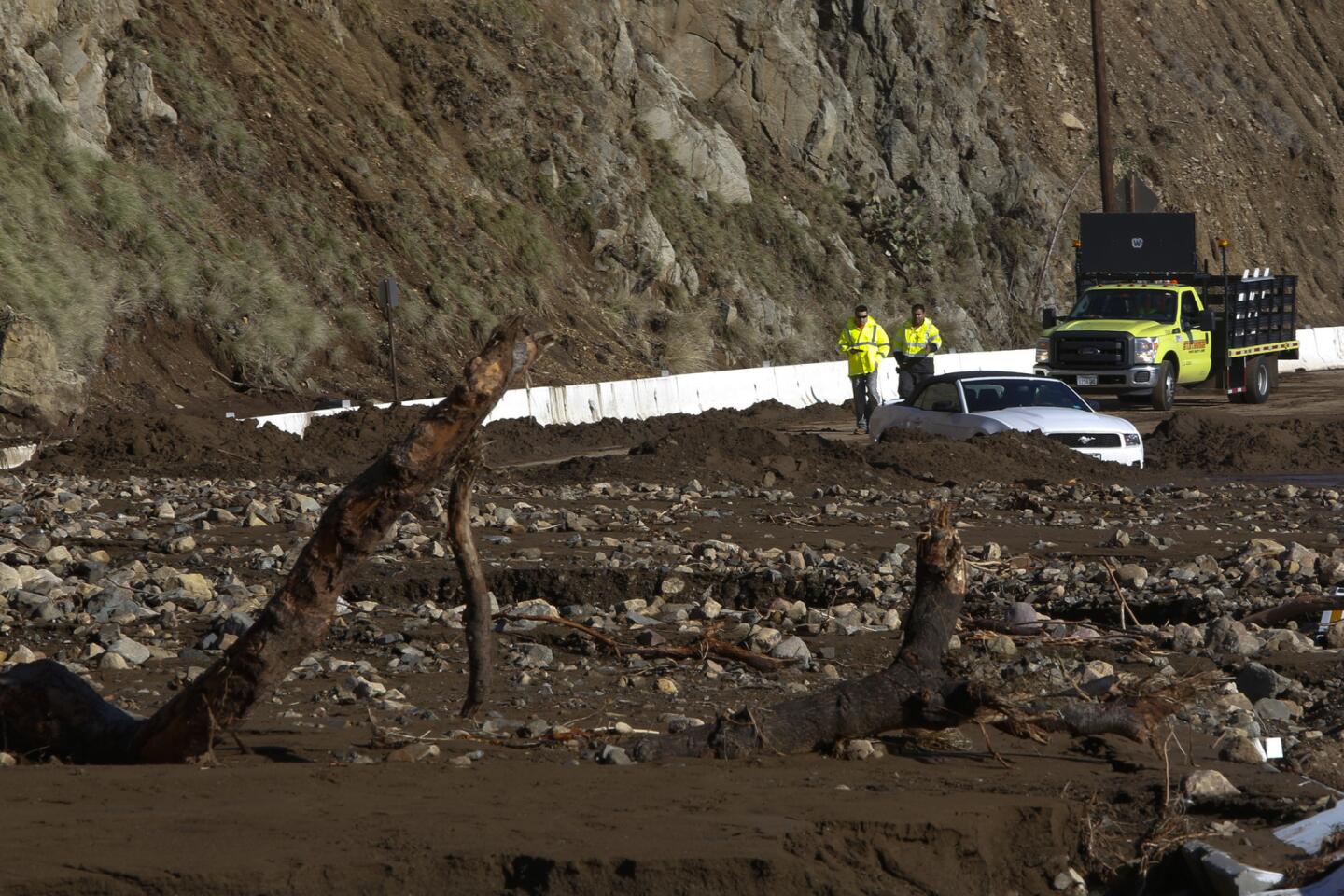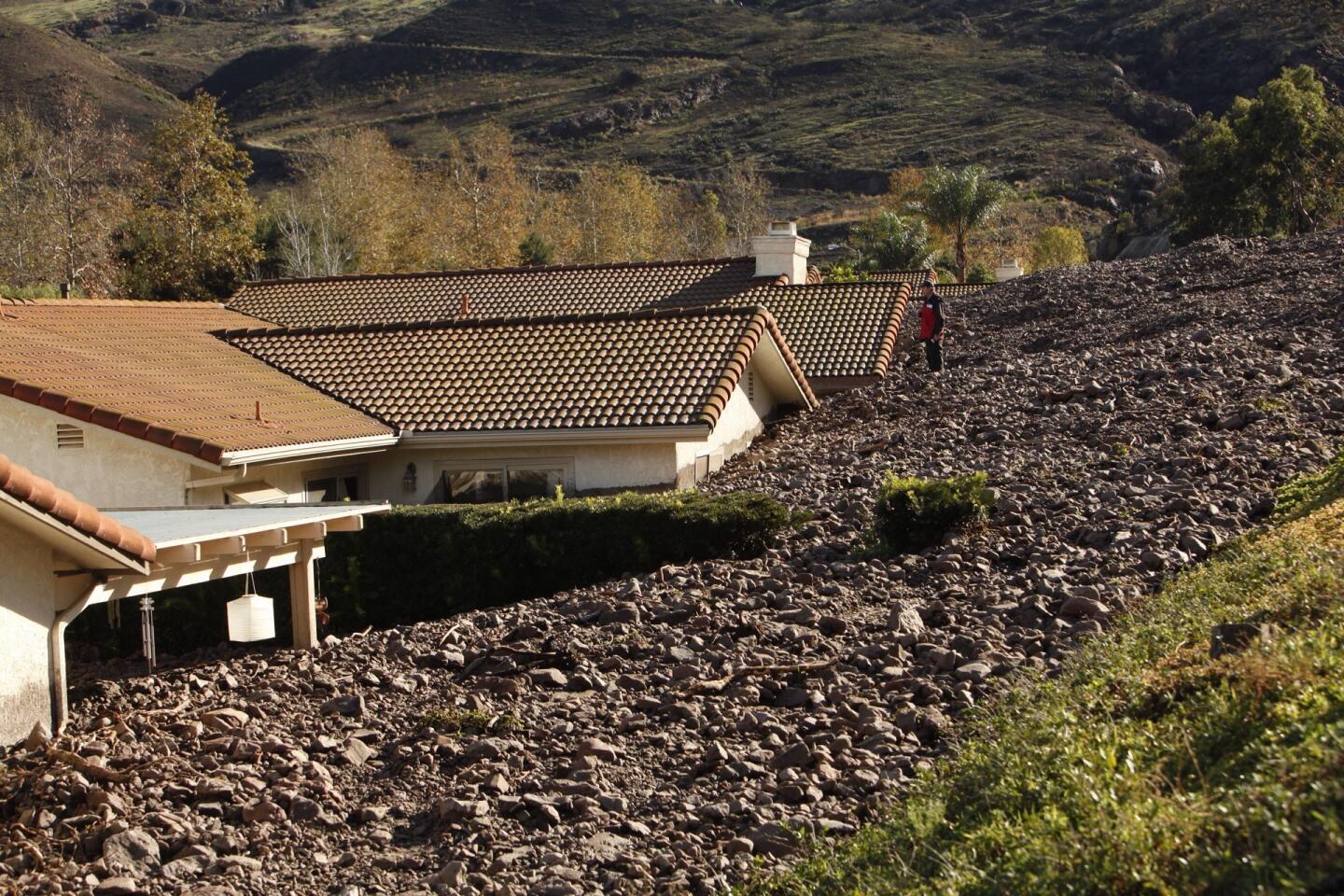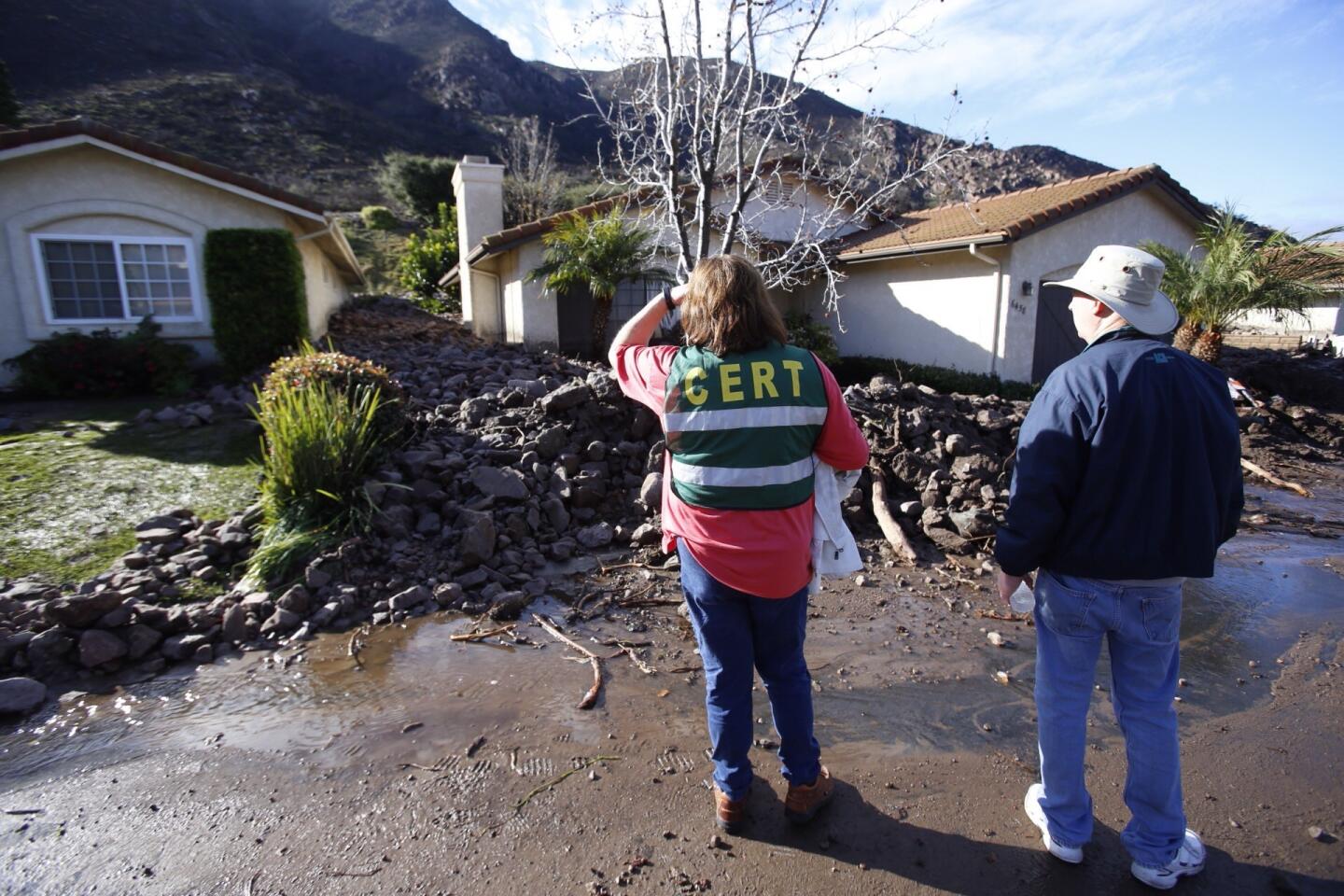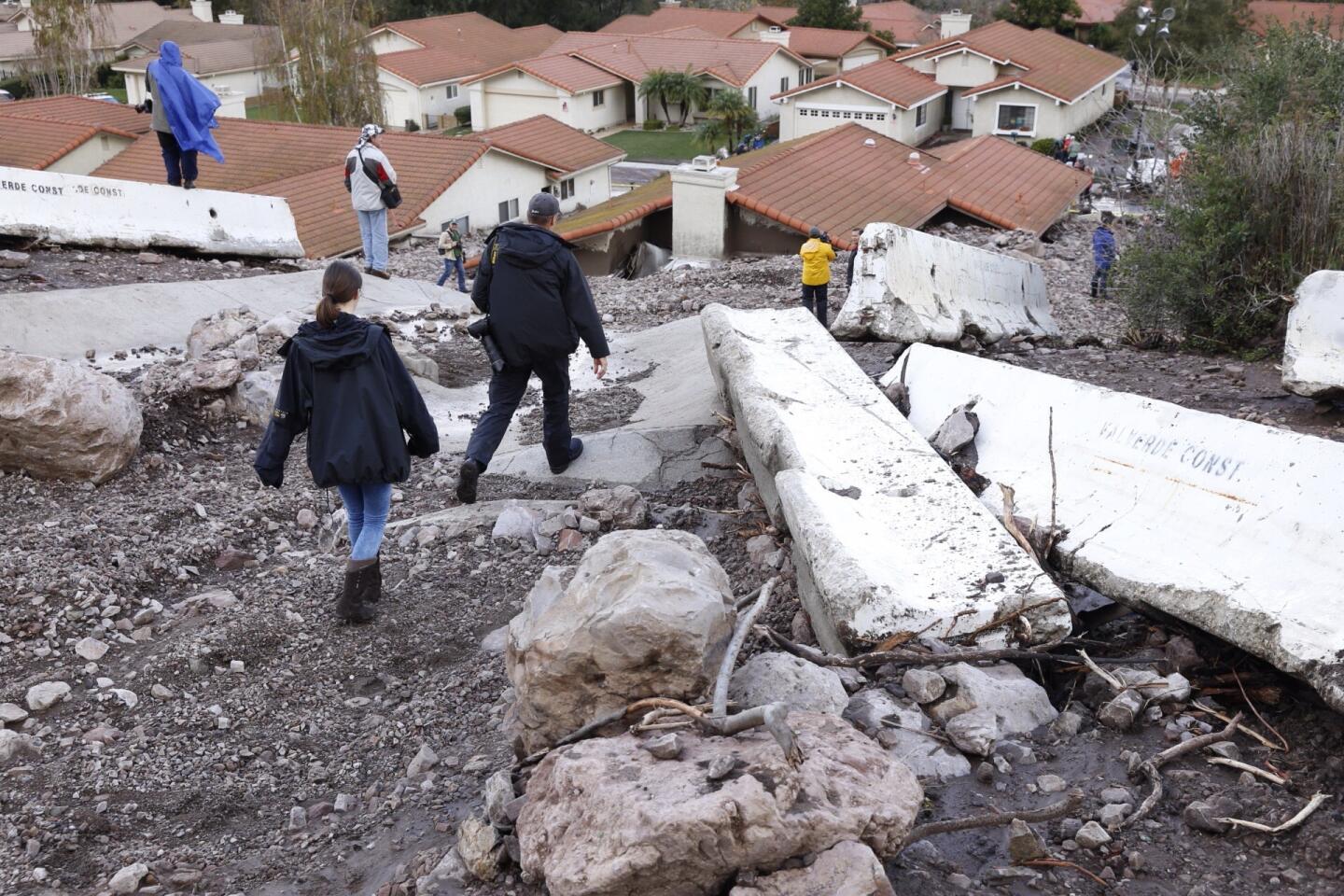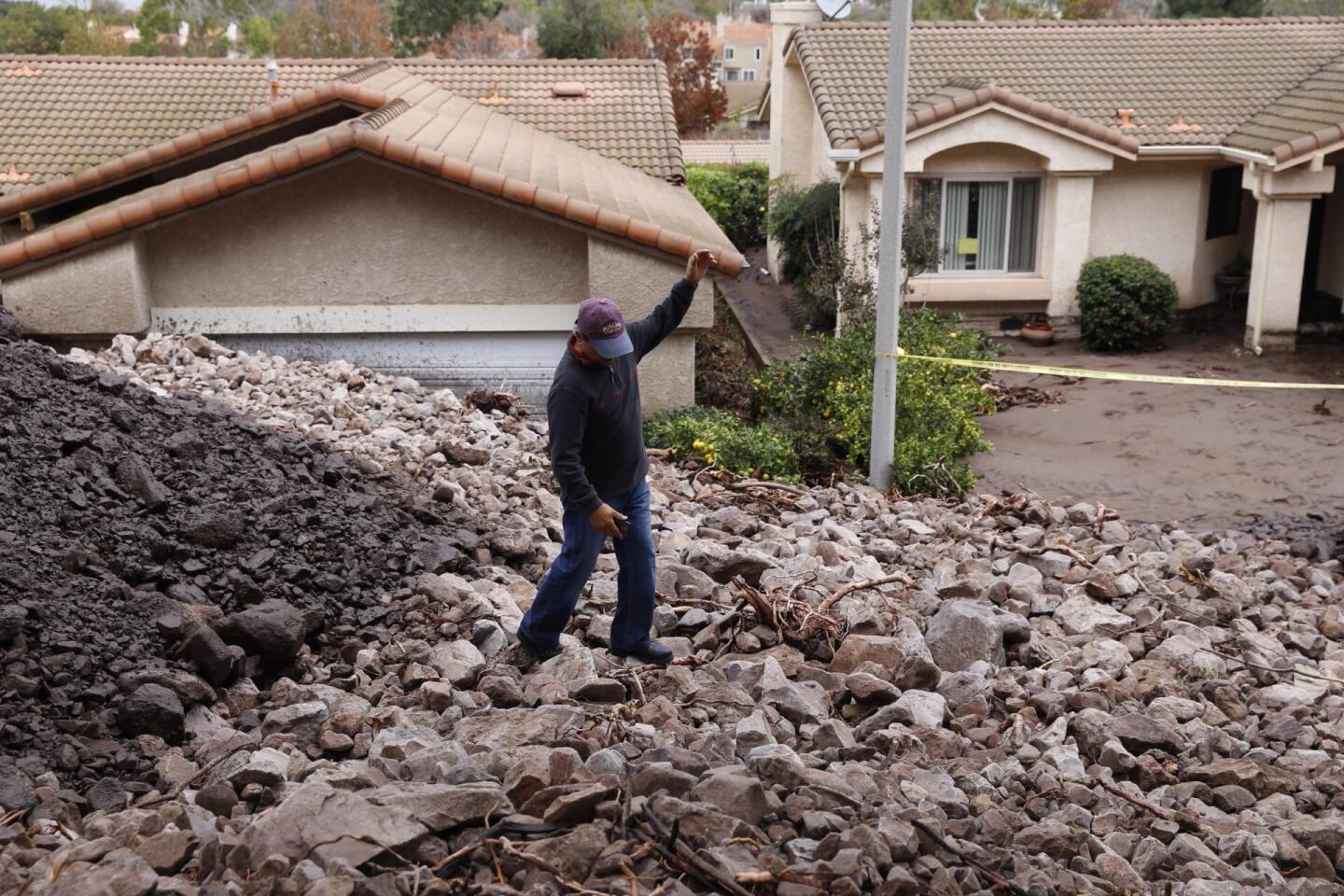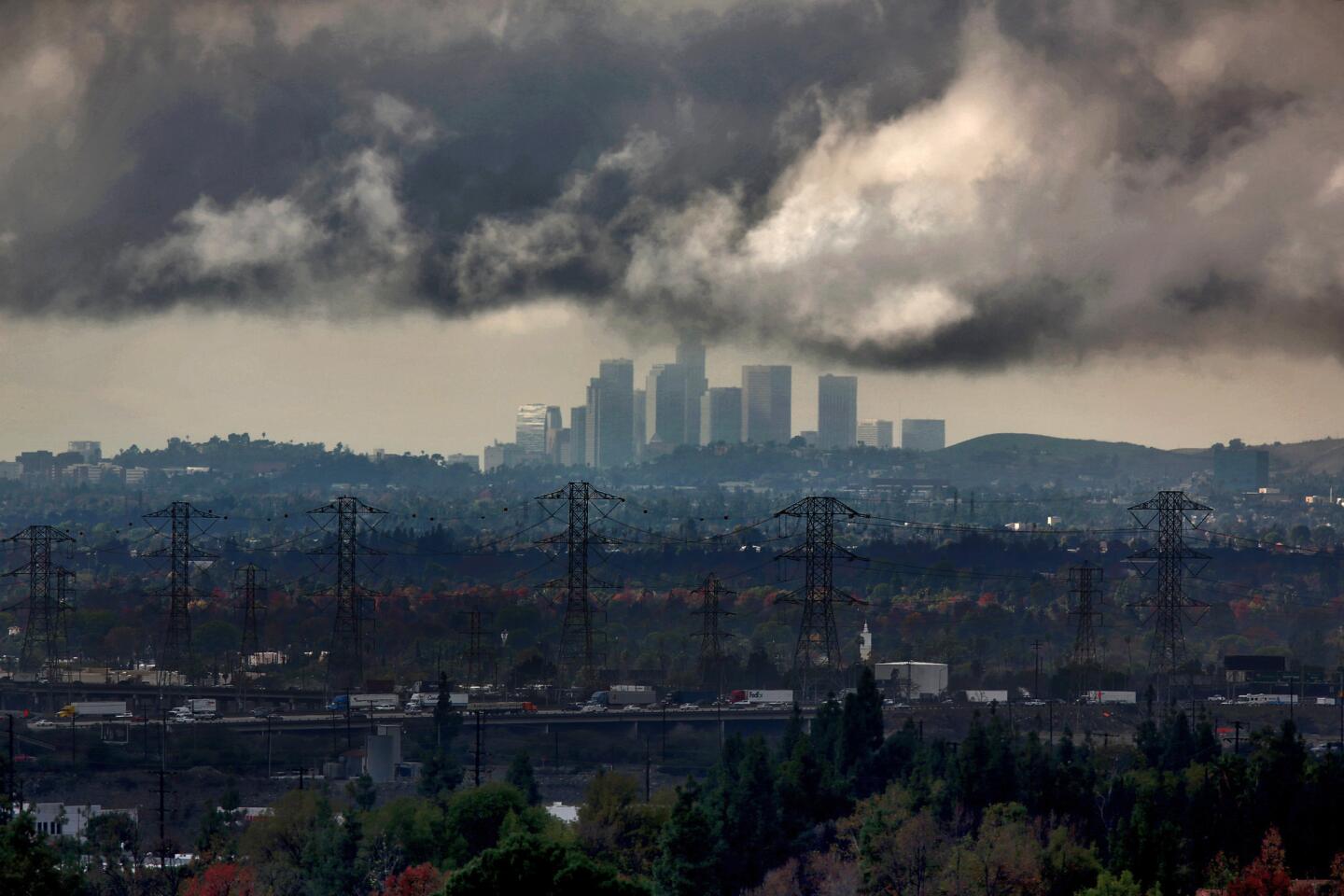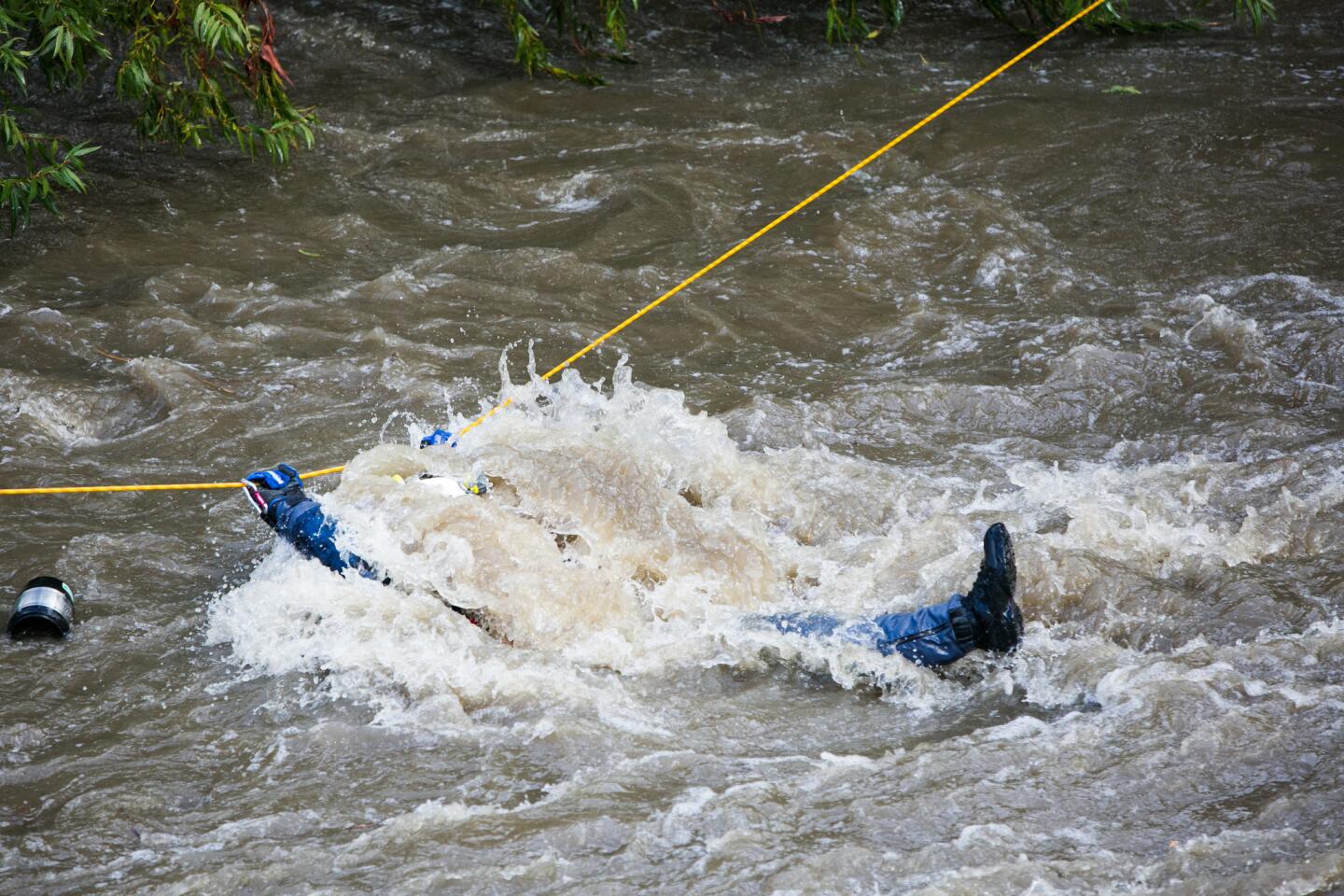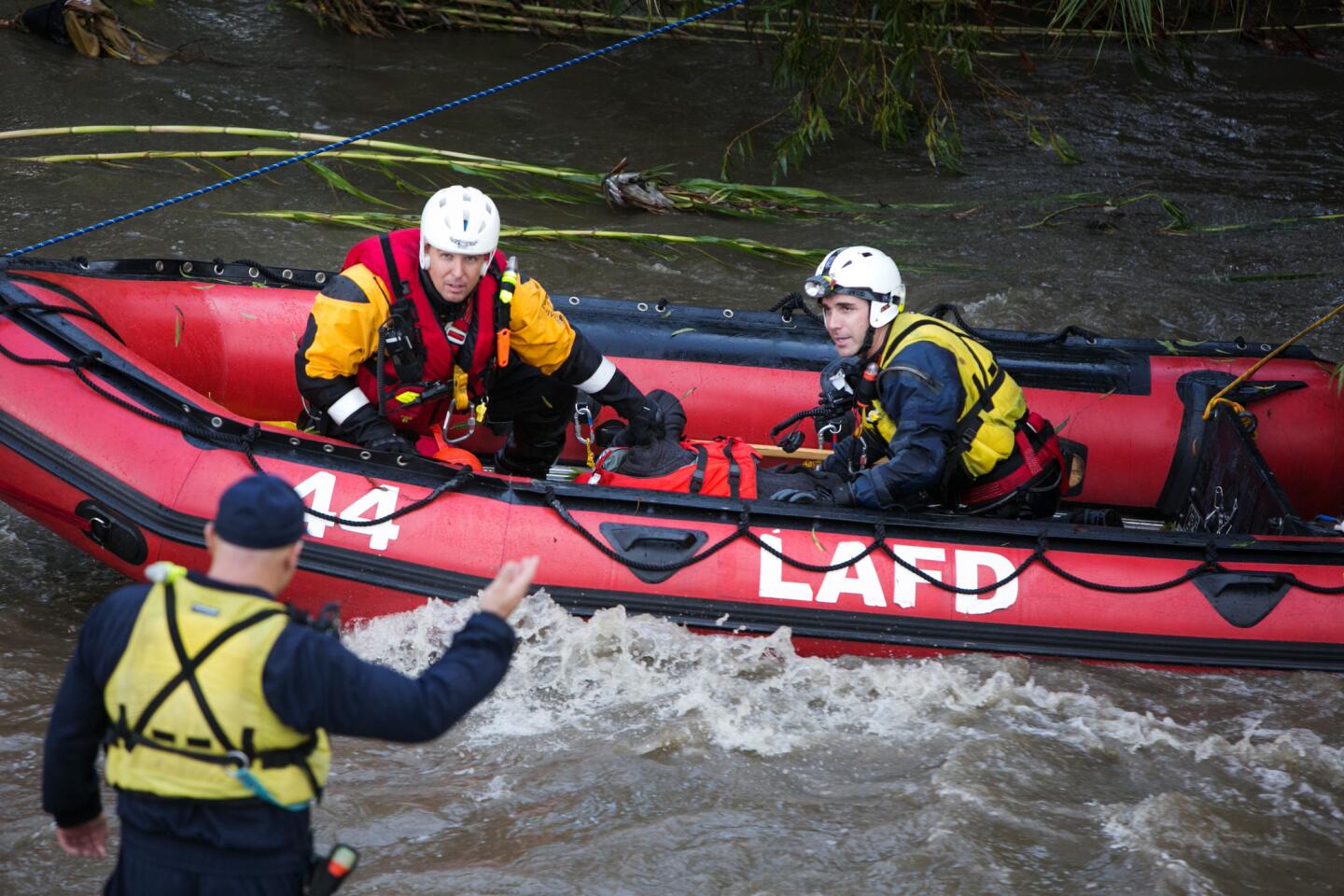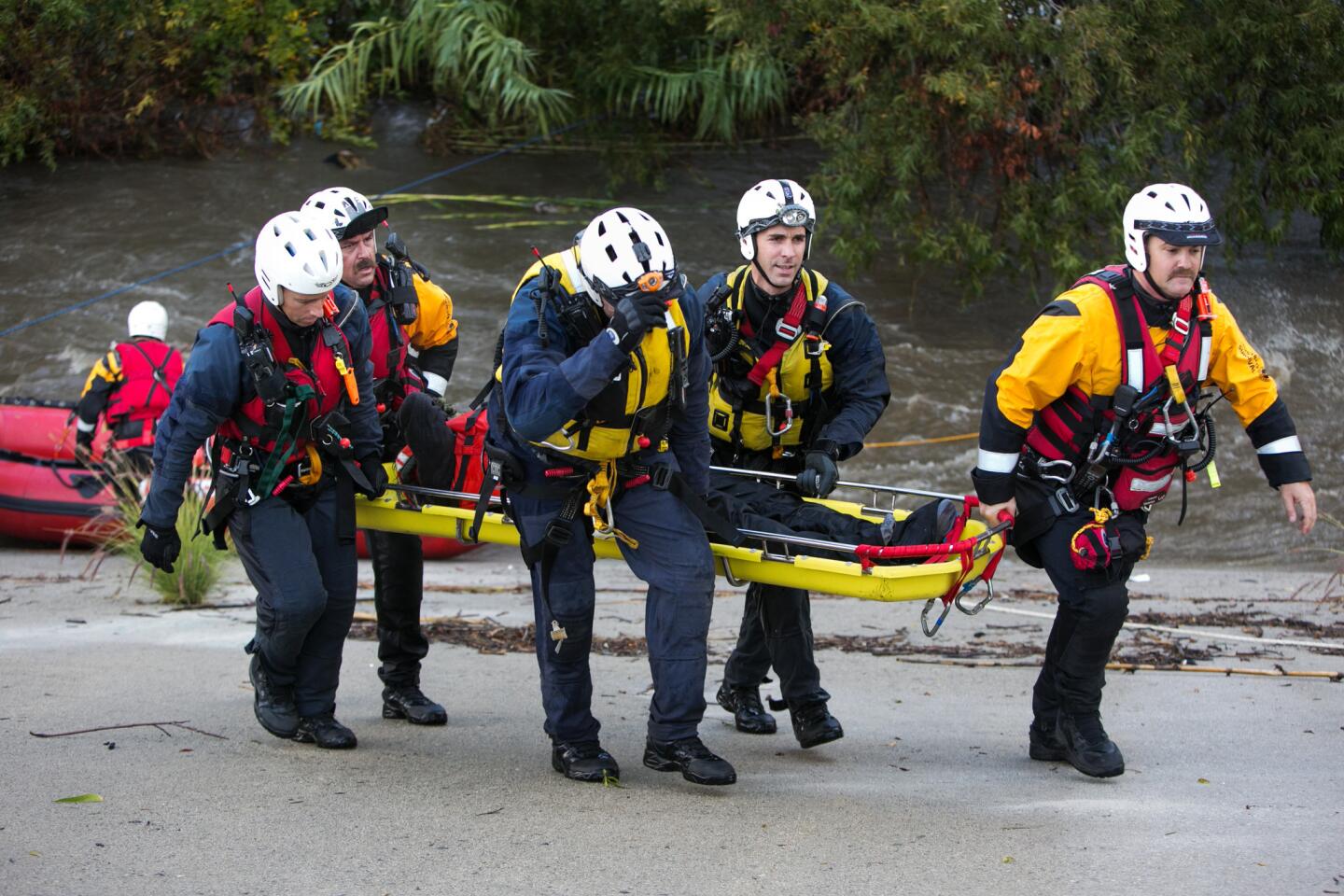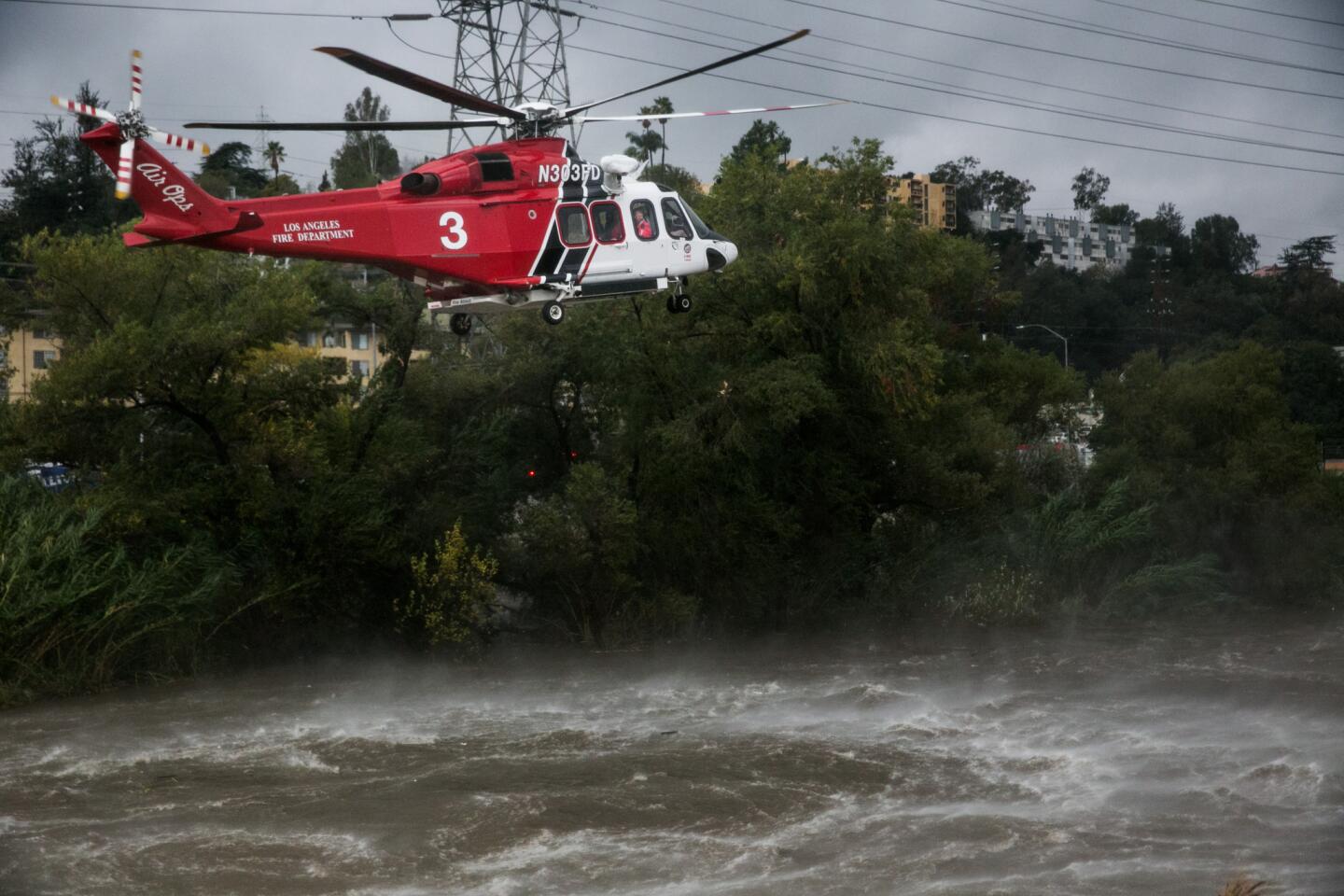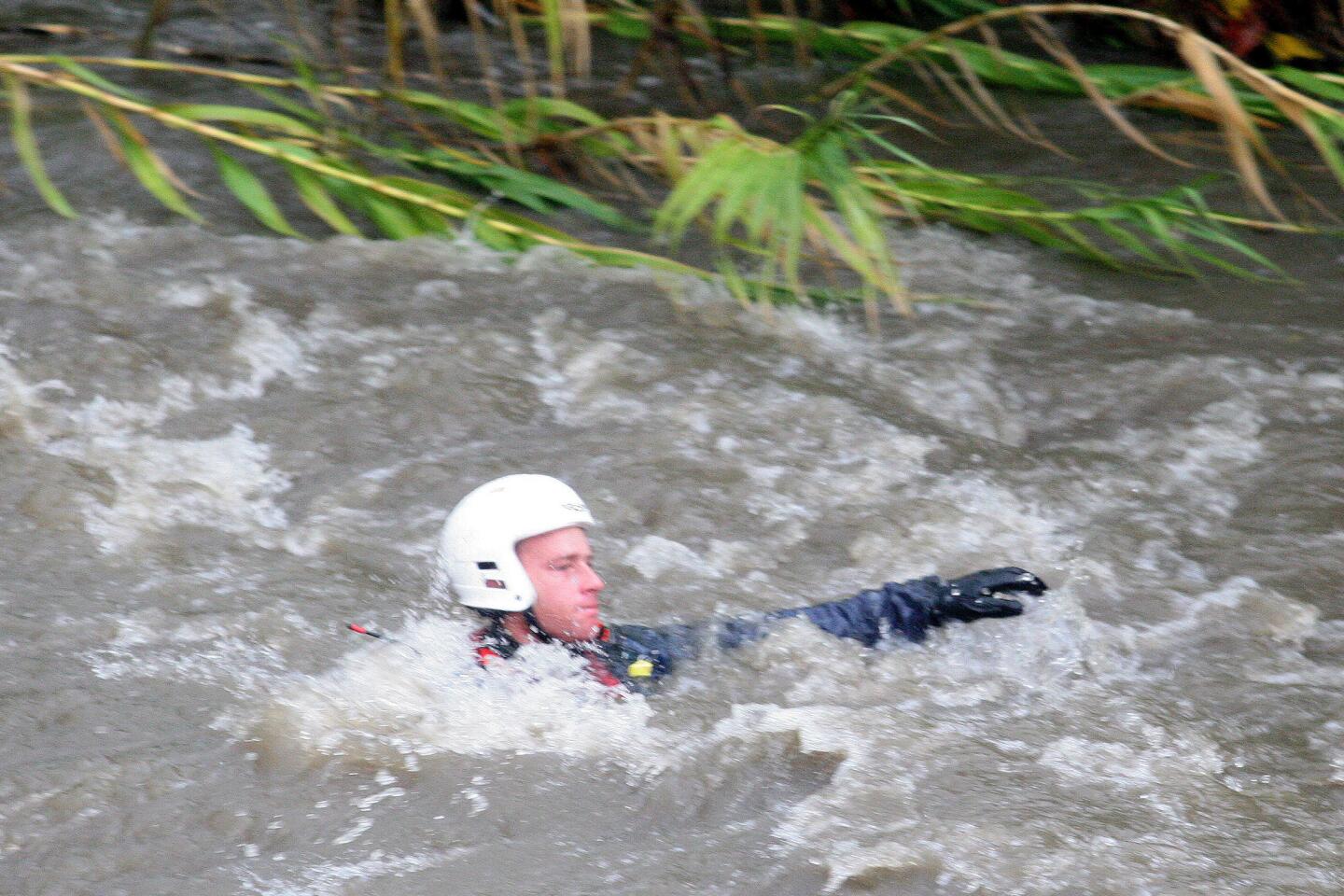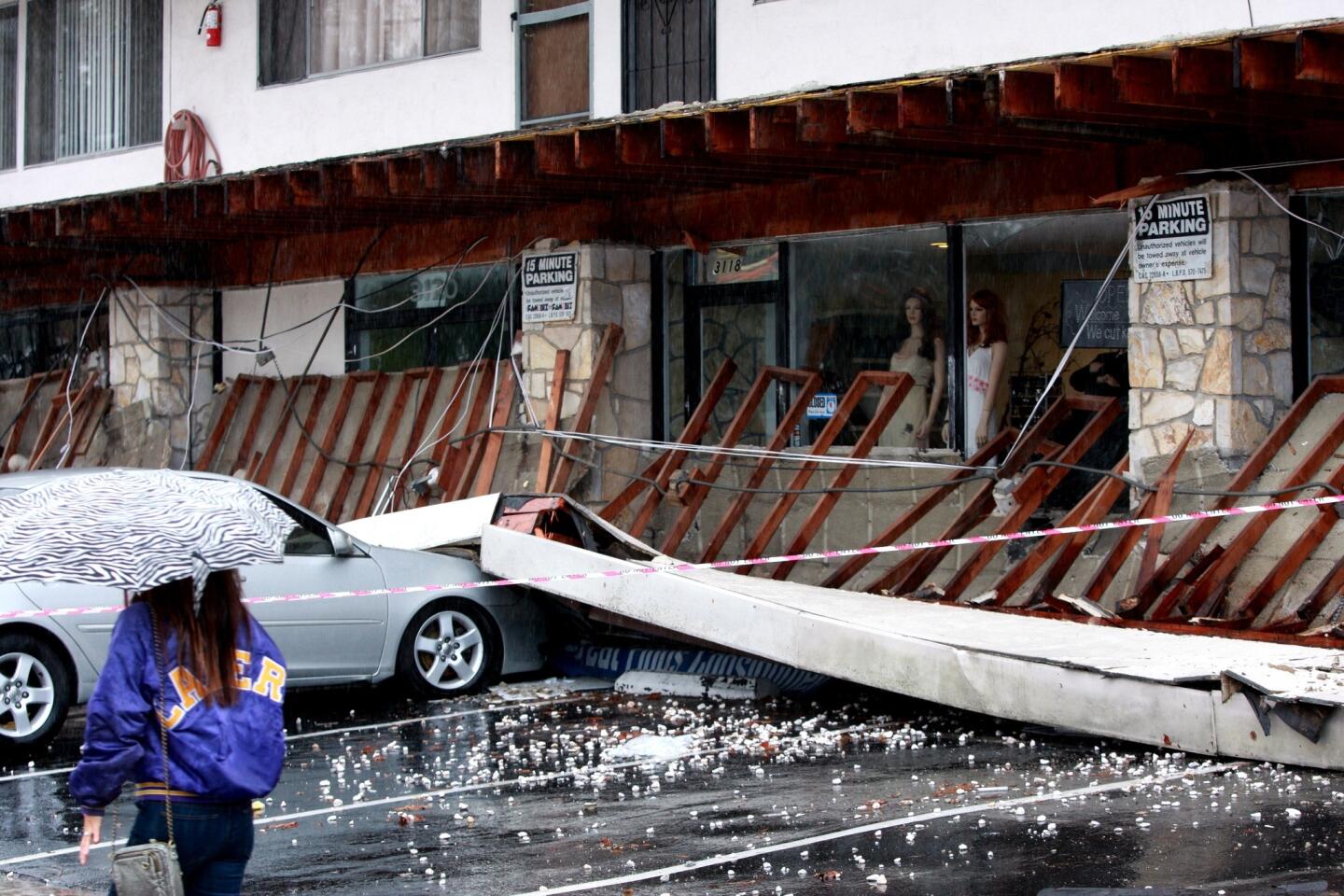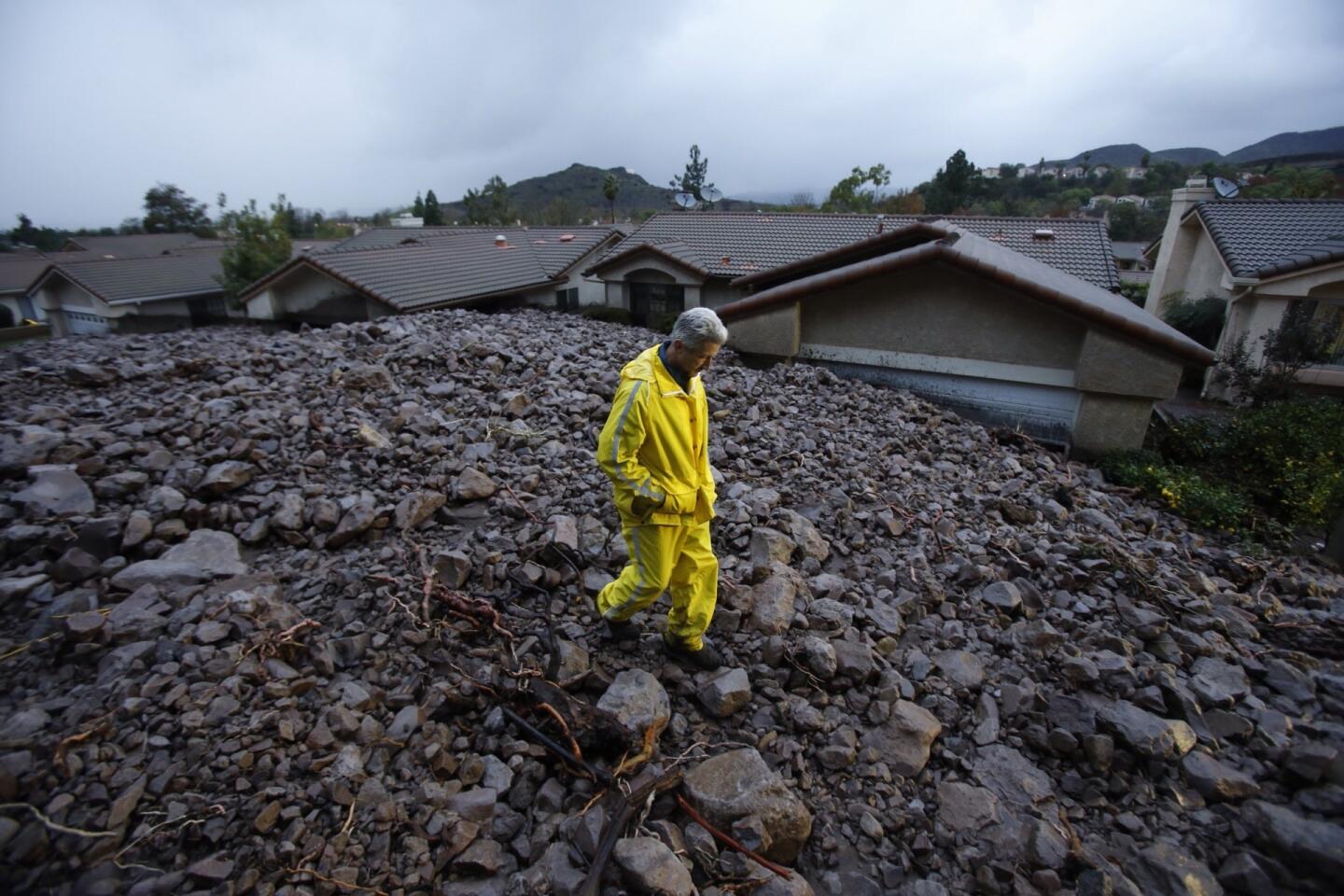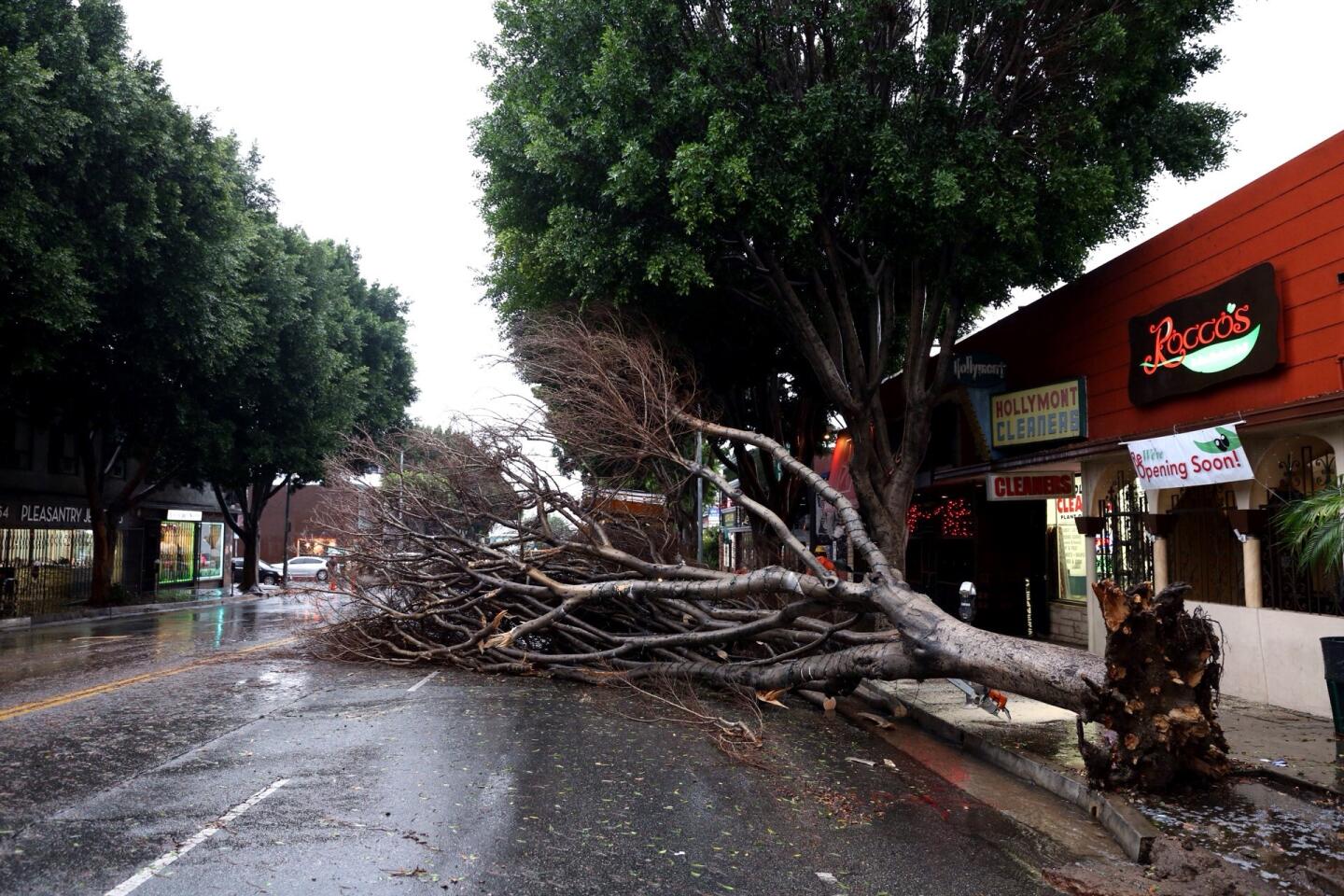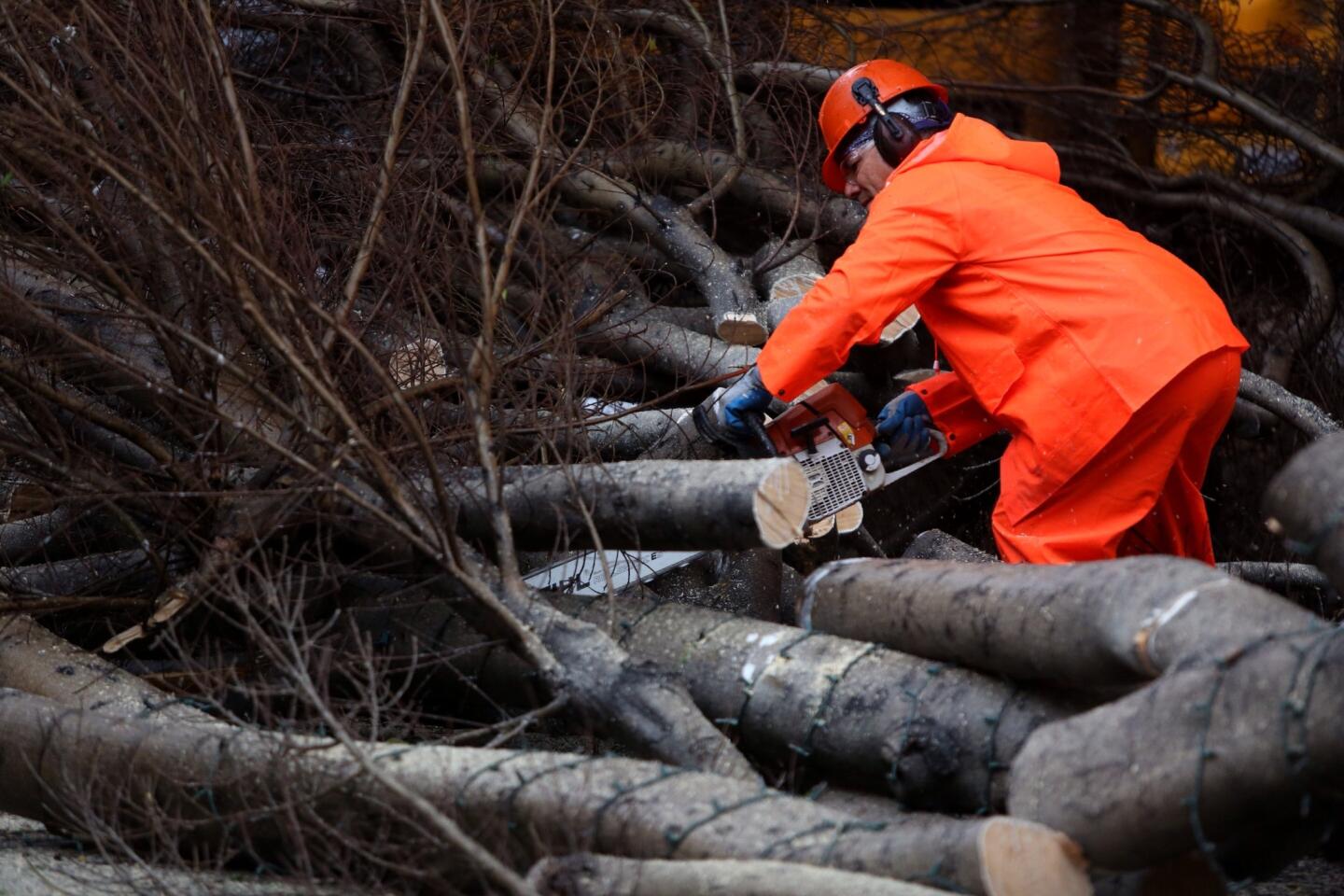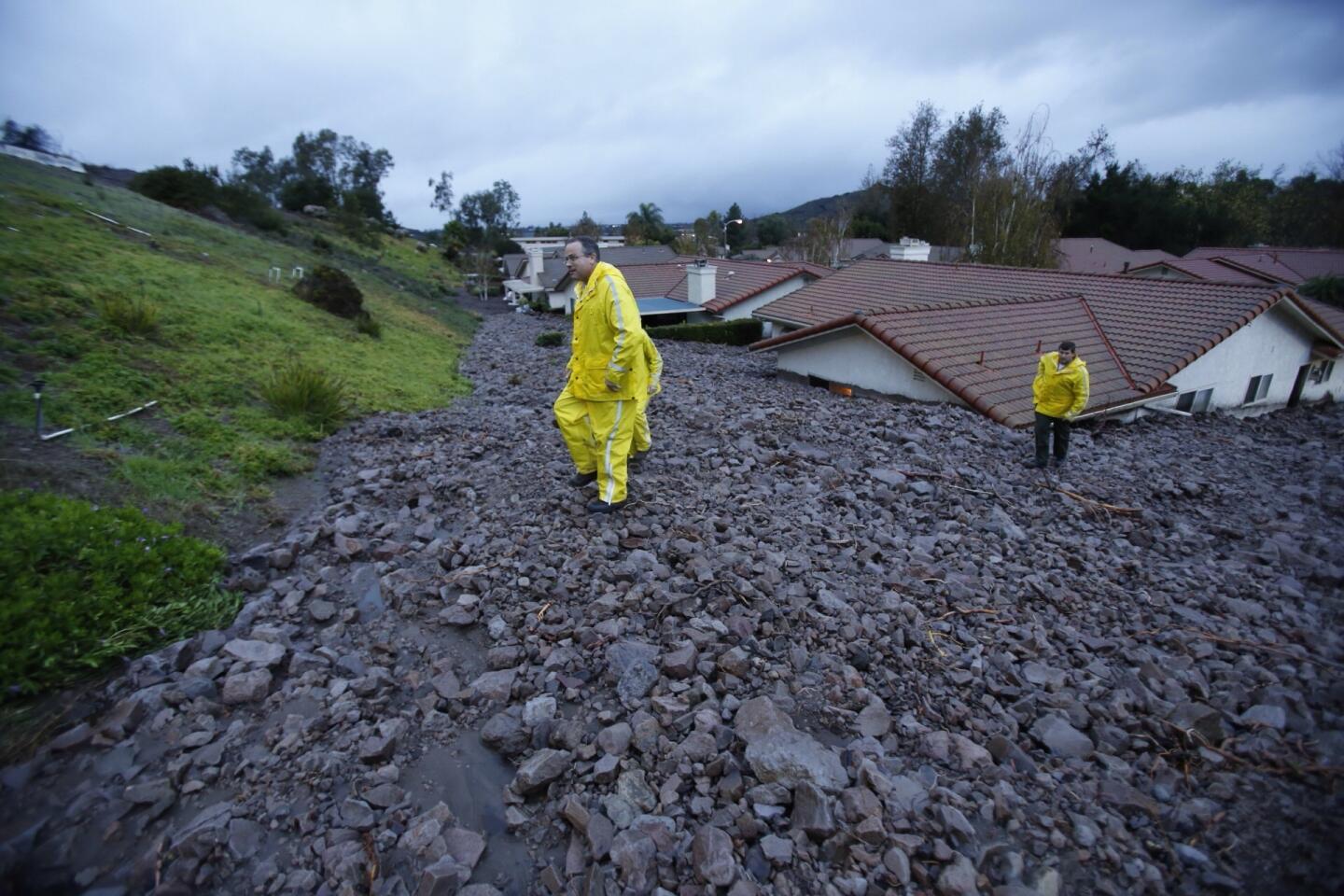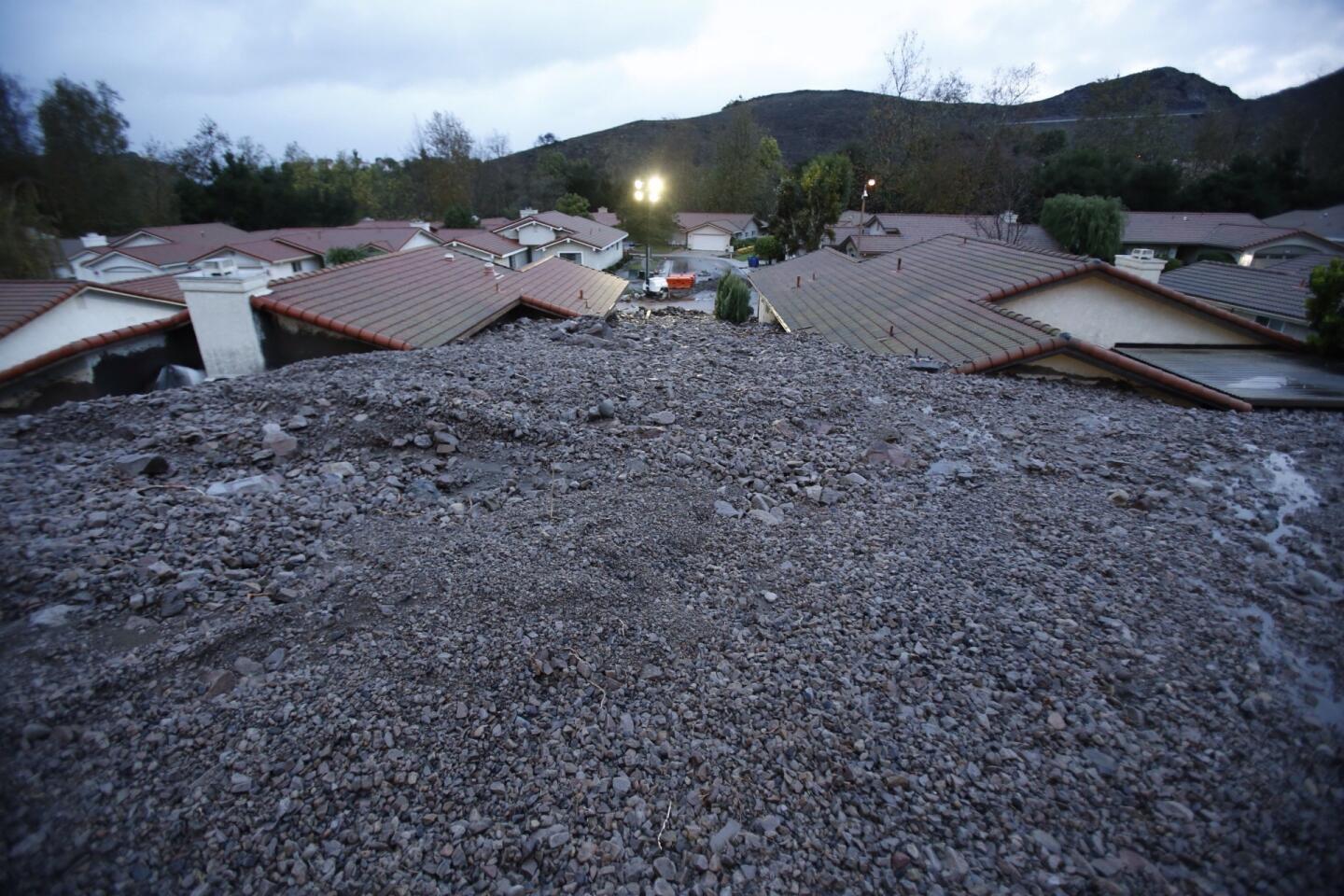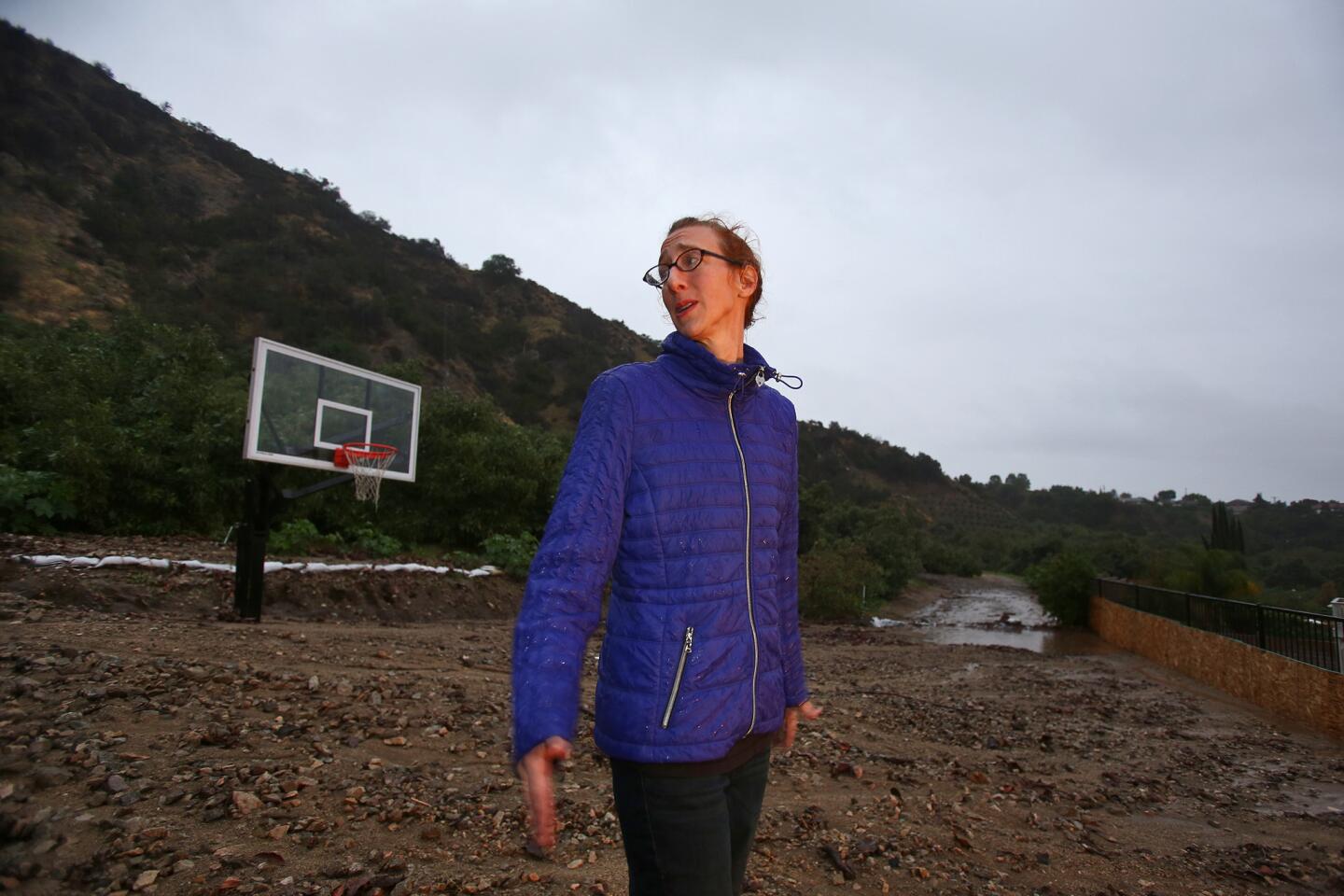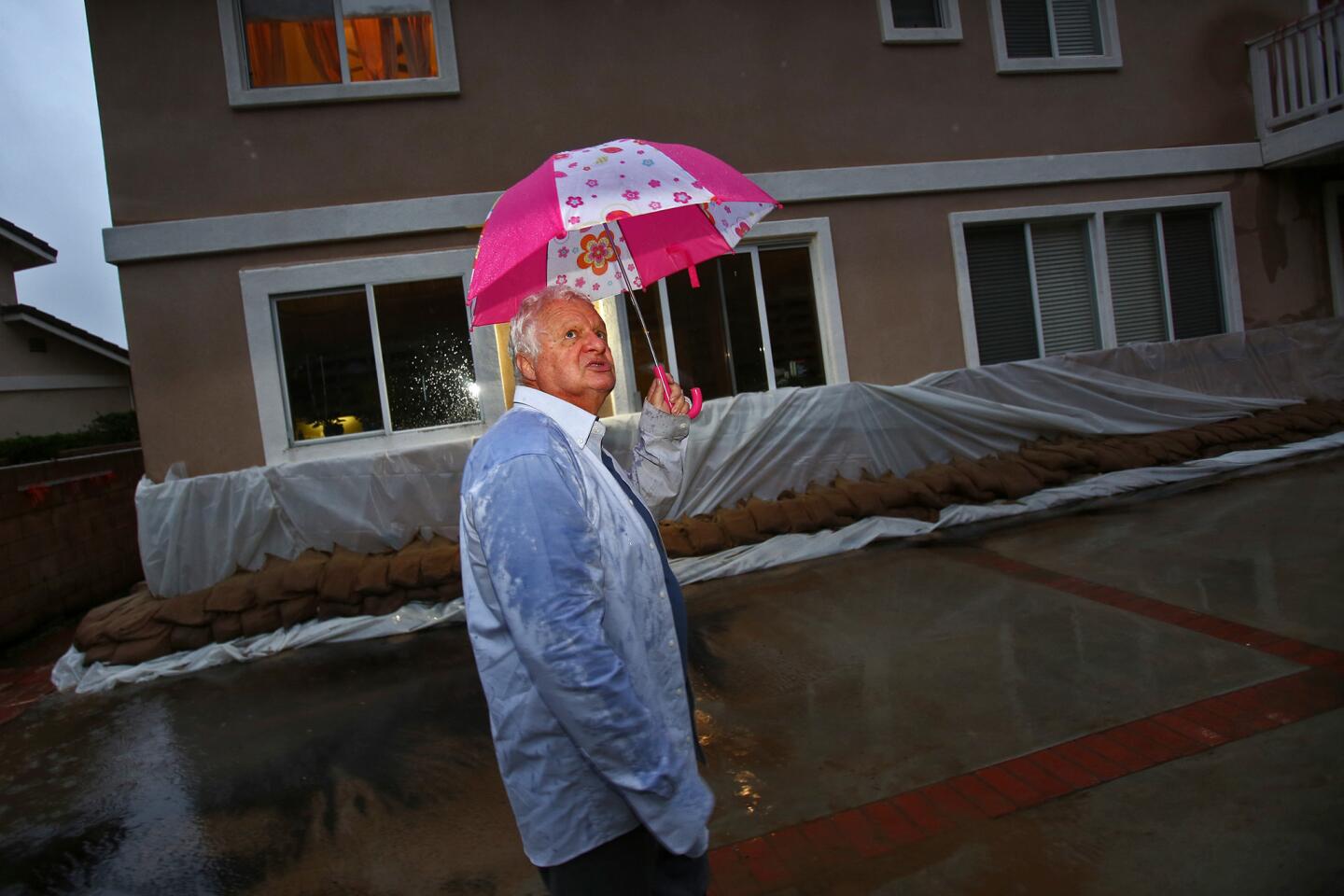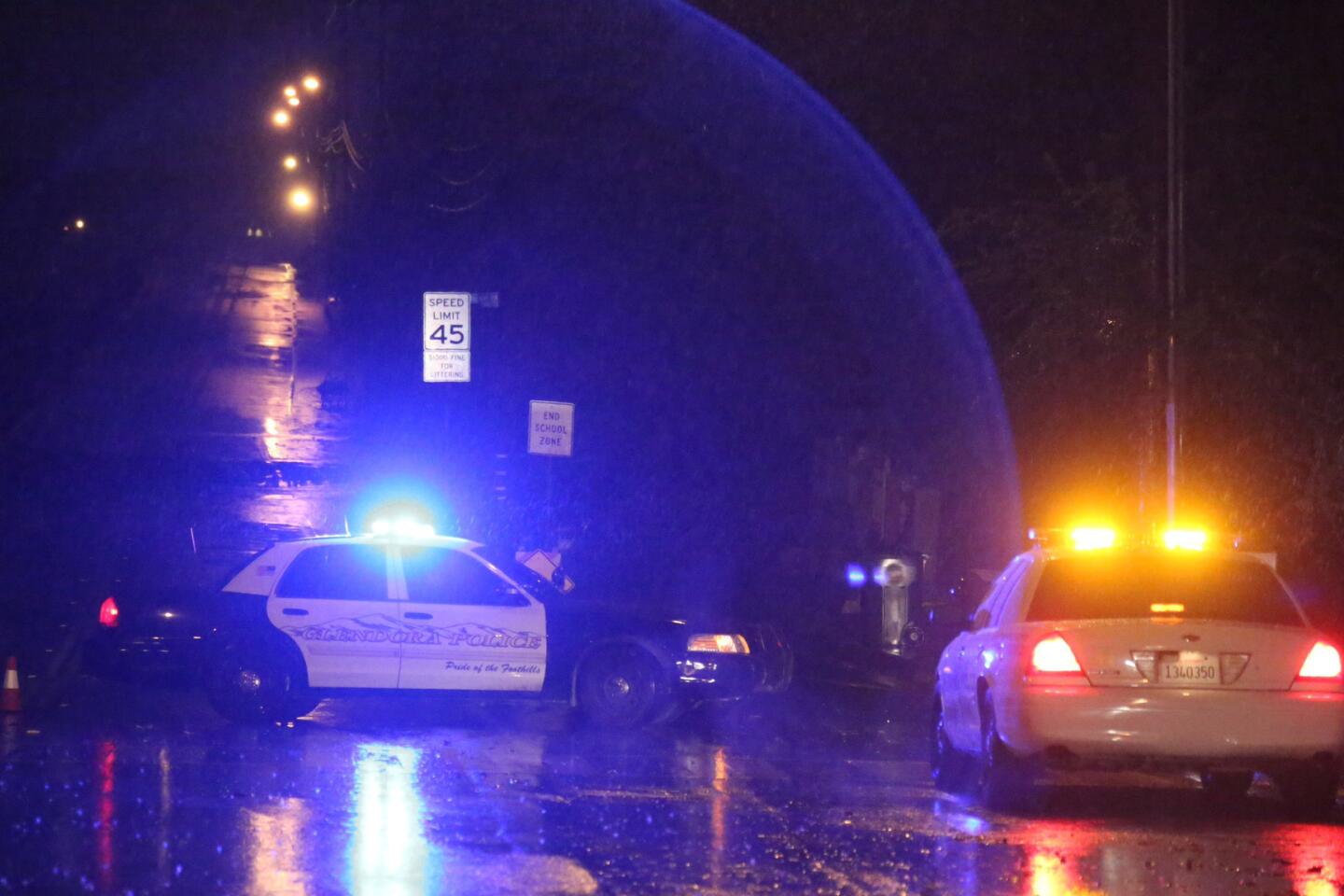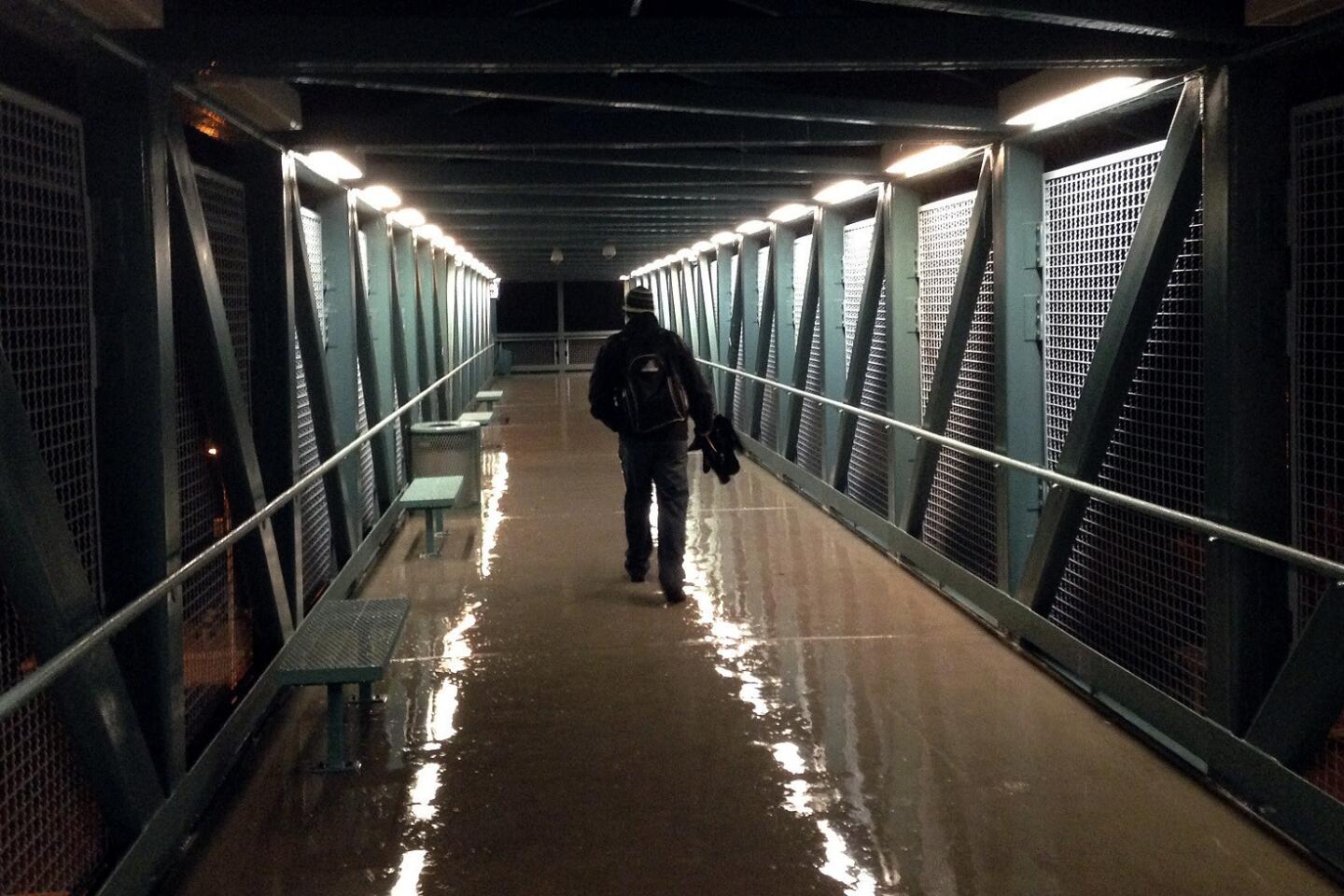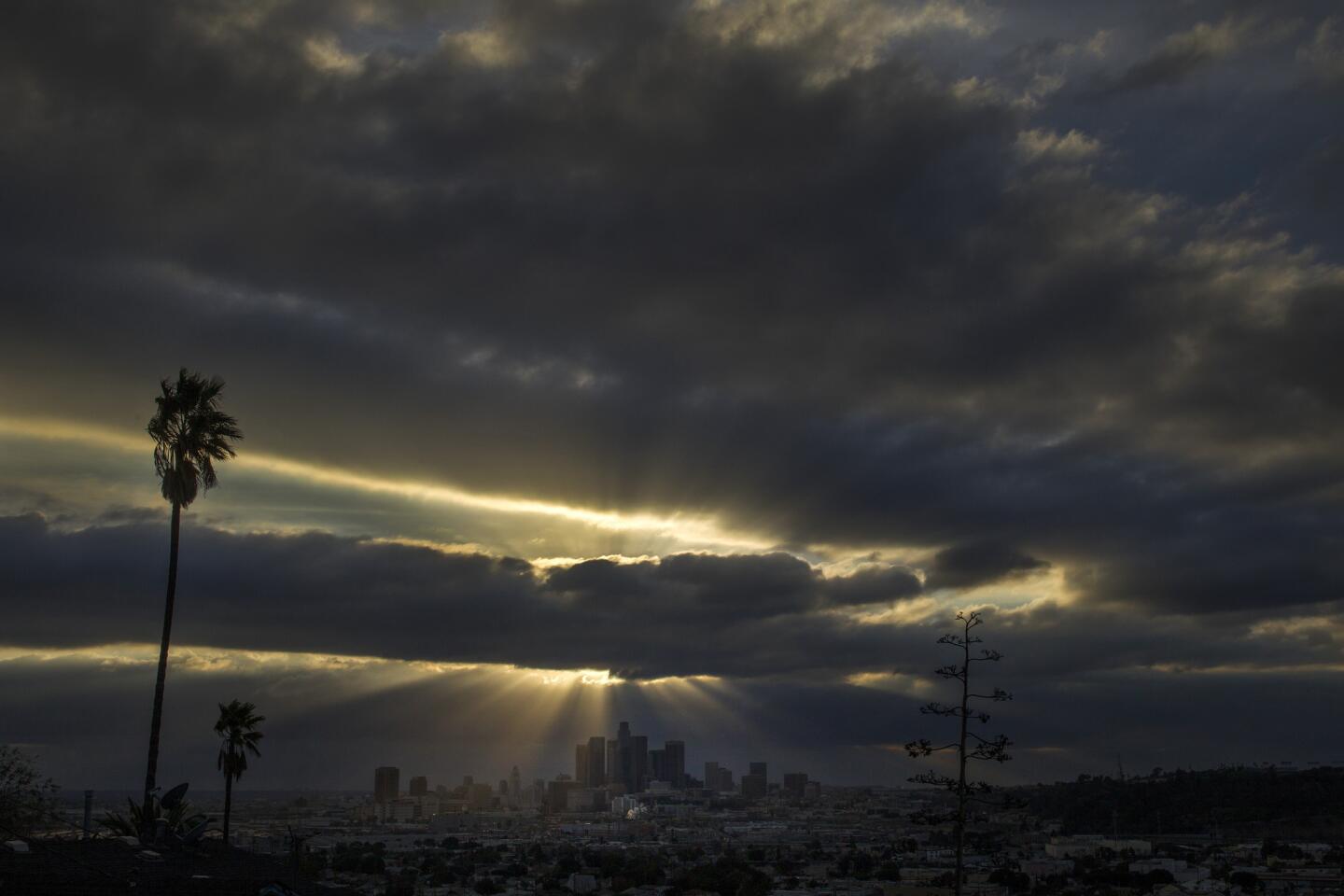California drought: We need 11 trillion gallons of water in the bank
- Share via
A series of rainstorms — one of which was powerful and destructive for residents statewide — helped deposit needed moisture to California, but it’s going to take 11 trillion gallons of water in storage to recover from the drought, NASA scientists said this week.
California must receive three seasons of above-average rainfall to get back to a “manageable situation,” said Jay Famiglietti, senior water-cycle scientist of NASA’s Jet Propulsion Laboratory in Pasadena.
“We need 11 trillion just to get back to our normal, dry conditions,” he said.
The state receives an average 22 inches of rain annually — which translates into an estimated 60 trillion gallons — but two-thirds of it is lost to evaporation and runoff, the NASA scientist said.
“What is left behind is used for irrigation and for municipal and industrial use,” he said. “In short, we use it and there is very little left behind to increase storage.”
The sobering news comes after Californians were pummeled with snow and heavy rain that flooded streets, sent debris flows into homes and toppled trees, including one that killed a teen boy.
In spite of the sometimes tragic results, the storms have helped in reloading water resources. But they are much like a deposit into an empty bank account, Famiglietti said.
California’s water deficit is 1 1/2 times the size of Lake Mead — the largest U.S. reservoir, located on the Colorado River in Nevada.
Last week, Ryan Maue, a Florida-based meteorologist for WeatherBELL Analytics, estimated that California received 10 trillion gallons of water over a 10-day period.
But is that enough to help California recover from the drought?
Famiglietti said, “Not a chance.”
Using data from NASA’s Gravity Recovery and Climate Experiment satellites, scientists developed a first-of-its-kind calculation to determine the volume of water needed to end California’s drought.
A team of scientists found water storage was 11 trillion gallons below normal seasonal levels in the Sacramento and San Joaquin river basins. That was at the height of California’s three-drought earlier this year.
The scientist estimated that -- thanks to evaporation and runoff — last week’s heavy rainstorm only increased reservoir storage by perhaps 3%.
Information collected from the satellites since it launched in 2002 showed the deficit had been increasing. The rivers have decreased in volume by 4 trillion gallons each year since 2011, which is more than Californians use each year for their homes and communities.
In early 2014, data showed that California’s also hadn’t been spared.
NASA’s Airborne Snow Observatory showed the Sierra Nevada snowpack was half of previous estimates.
“The 2014 snowpack was one of the three lowest on record and the worst since 1977, when California’s population was half what it is now,” JPL’s Airborne Snow Observatory Principal Investigator Tom Painter said in a statement.
“Besides resulting in less snow water, the dramatic reduction in snow extent contributes to warming our climate by allowing the ground to absorb more sunlight. This reduces soil moisture, which makes it harder to get water from the snow into reservoirs once it does start snowing again.”
Scientists say groundwater levels across the Southwest are also “in the lowest 2% to 10% since 1949.”
For breaking news, follow @VeronicaRochaLA.
More to Read
Sign up for Essential California
The most important California stories and recommendations in your inbox every morning.
You may occasionally receive promotional content from the Los Angeles Times.


